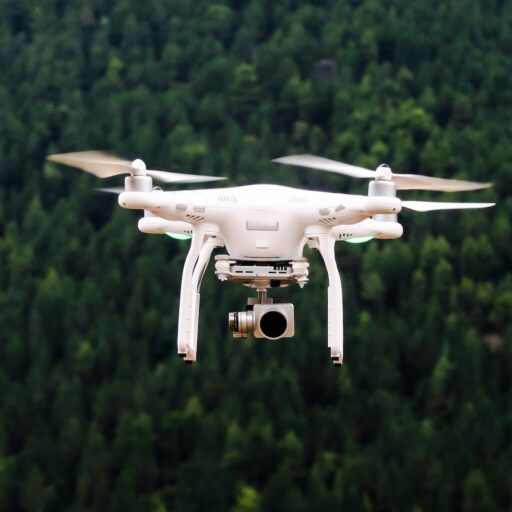Support our educational content for free when you purchase through links on our site. Learn more
[2023] How Profitable Are Drone Businesses? Insights and Opportunities
Quick Answer: Drone businesses can be highly profitable, with opportunities in various industries such as aerial photography, videography, agriculture, construction, and more. The drone photography services market alone is estimated to be worth $617.6 million in 2023 and expected to climb to nearly $3.5 billion by 2033. However, success in the drone business requires proper training, certification, and understanding of the market.
Table of Contents:
- Quick Answer
- Quick Tips and Facts
- Background
- Opportunities in the Drone Business
- Drone Training and Certifications
- Choosing the Right Drone
- FAQ
- Conclusion
- Recommended Links
- Reference Links
Quick Answer
Drone businesses have the potential to be highly profitable, with opportunities in various industries. The drone photography services market alone is estimated to be worth $617.6 million in 2023 and expected to climb to nearly $3.5 billion by 2033[1]. However, success in the drone business requires proper training, certification, and understanding of the market.
Quick Tips and Facts
- The drone photography services market is estimated to be worth $617.6 million in 2023 and expected to climb to nearly $3.5 billion by 2033[^1].
- Aerial photography can be a lucrative business, with photographs worth between $75 and $200 each, and videos selling for $500 to $1,000[^1].
- Agriculture, construction, surveying and mapping, infrastructure inspection, and disaster relief are other profitable sectors for drone businesses[^1].
- Becoming a certified drone pilot requires obtaining Federal Aviation Administration (FAA) certification and undergoing training in unmanned aerial systems (UAS)[^1].
Background
Drones, also known as unmanned aerial vehicles (UAVs), have become increasingly popular in recent years. They offer a wide range of applications across various industries, making drone businesses a lucrative opportunity for entrepreneurs and pilots alike.
The drone industry has experienced significant growth, with the drone photography services market projected to reach nearly $3.5 billion by 2033[^1]. This growth is driven by the increasing demand for aerial photography, videography, agriculture, construction, surveying and mapping, infrastructure inspection, and disaster relief.
Opportunities in the Drone Business
Aerial Photography and Videography
Aerial photography and videography are among the most popular and profitable sectors in the drone business. Drones provide a unique perspective and allow photographers and videographers to capture stunning aerial shots that were previously only possible with helicopters or airplanes.
Drone pilots can offer their services for various purposes, including real estate photography, event coverage, tourism promotion, and more. Aerial photographs can be sold for prices ranging from $75 to $200 each, while videos can fetch even higher prices, ranging from $500 to $1,000[^1].
Recommended Drone for Aerial Photography and Videography:
- DJI Mavic 3E: The DJI Mavic 3E is a professional-grade drone with a wide-angle 4/3 CMOS, 20MP sensor, mechanical shutter, and up to 45 minutes of flight time. It offers excellent image quality and stability, making it a top choice for professional drone operators[9].
Agriculture
Drones have revolutionized the agriculture industry by providing farmers with valuable data for crop monitoring, detecting issues affecting crop growth, and precision spraying of materials. With the help of drones, farmers can optimize their crop yields, reduce costs, and make informed decisions about irrigation, fertilization, and pest control.
Drone pilots can offer their services to farmers, providing aerial imaging, crop health analysis, and data-driven insights. The demand for drone services in agriculture is expected to grow as farmers recognize the benefits of using drones for precision farming.
Recommended Drone for Agriculture:
- DJI Agras T20: The DJI Agras T20 is a professional agricultural drone designed for precision spraying and crop monitoring. It features advanced flight control systems, high payload capacity, and intelligent spraying technology, making it an ideal choice for agricultural applications[^9].
Construction
Drones play a crucial role in the construction industry, providing valuable data for Building Information Modeling (BIM), project progress monitoring, and site inspections. Drone surveying allows construction companies to gather accurate and up-to-date information about their projects, saving time and reducing costs.
Drone pilots can offer their services to construction companies, providing aerial surveys, 3D mapping, and progress monitoring. By utilizing drones, construction companies can improve project efficiency, enhance safety, and make informed decisions based on accurate data.
Recommended Drone for Construction:
- DJI Phantom 4 RTK: The DJI Phantom 4 RTK is a professional-grade drone specifically designed for surveying and mapping applications. It features a high-resolution camera, real-time kinematic (RTK) positioning, and advanced flight planning capabilities, making it an excellent choice for construction professionals[^9].
Surveying and Mapping
Drones have revolutionized the surveying and mapping industry by providing data from vantage points that were previously inaccessible to humans. With the ability to capture high-resolution aerial images and create accurate 3D models, drones have become an essential tool for surveyors and cartographers.
Drone pilots can offer their services for land surveying, topographic mapping, and creating digital elevation models (DEMs). Drones can cover large areas quickly and provide highly detailed and accurate data, saving time and reducing costs compared to traditional surveying methods.
Recommended Drone for Surveying and Mapping:
- DJI Phantom 4 Pro V2.0: The DJI Phantom 4 Pro V2.0 is a versatile drone with a high-resolution camera, advanced flight modes, and obstacle avoidance capabilities. It offers excellent image quality and stability, making it a popular choice for surveying and mapping professionals[^9].
Infrastructure Inspection
Drones are increasingly used for infrastructure inspection, including bridges, power lines, pipelines, and buildings. By utilizing drones, inspectors can safely and efficiently assess the condition of structures, identify potential issues, and plan maintenance or repairs.
Drone pilots can offer their services to infrastructure inspection companies, providing aerial inspections, thermal imaging, and data analysis. Drones can access hard-to-reach areas and capture detailed visual and thermal data, allowing inspectors to make informed decisions and prioritize maintenance efforts.
Recommended Drone for Infrastructure Inspection:
- DJI Matrice 300 RTK: The DJI Matrice 300 RTK is a professional-grade drone designed for industrial applications, including infrastructure inspection. It features advanced flight capabilities, high-resolution cameras, and a robust payload capacity, making it an ideal choice for infrastructure inspection professionals[^9].
Disaster Relief and Search-and-Rescue
Drones play a crucial role in disaster relief and search-and-rescue missions. They can quickly assess the extent of damage, produce 3D maps of affected areas, and locate individuals in need of assistance. Drones provide valuable situational awareness and help first responders make informed decisions in critical situations.
Drone pilots can offer their services to emergency response teams, providing aerial support, search-and-rescue operations, and damage assessment. Drones equipped with thermal imaging cameras and advanced flight capabilities can aid in locating missing persons and identifying areas of high risk.
Drone Training and Certifications
To operate a drone business legally and safely, it is essential to obtain the necessary training and certifications. The Federal Aviation Administration (FAA) requires drone pilots to obtain a Remote Pilot Certificate, also known as Part 107 certification, to fly drones for commercial purposes in the United States.
To obtain the Remote Pilot Certificate, aspiring drone pilots must pass an FAA knowledge test covering aeronautical knowledge, airspace regulations, and flight operations. Additionally, specialized training in unmanned aerial systems (UAS) can provide valuable insights into drone operations, safety procedures, and industry-specific applications.
Drone Brands™ offers comprehensive drone training and certification courses to help aspiring drone pilots kickstart their careers in the drone business. Our courses cover all the necessary knowledge and skills required to become a certified and successful drone pilot.
Choosing the Right Drone
Choosing the right drone for your business is crucial for success. Factors to consider include flight time, camera quality, payload capacity, flight range, and advanced features such as obstacle avoidance and GPS positioning.
Drone Brands™ offers a wide range of drones suitable for various applications and budgets. Whether you’re a professional photographer, an agricultural specialist, or a construction professional, we have the perfect drone for your needs.
Visit our Drone Manufacturers category for in-depth guides and reviews of the top drone brands and models available on the market.
FAQ

How much money can you make with a drone business?
The potential earnings in a drone business can vary depending on various factors such as the services offered, market demand, and competition. Beginner drone pilots can expect to earn around $20 per hour, while experienced pilots can earn up to $36 per hour[^1]. However, the profitability of a drone business ultimately depends on the ability to attract clients, provide high-quality services, and establish a strong reputation in the industry.
What is the profit margin on drones?
The profit margin on drones can vary depending on the specific drone model, brand, and market conditions. Generally, the profit margin on drones ranges from 20% to 40% for retailers and distributors[2]. However, drone businesses that offer specialized services such as aerial photography or surveying can potentially achieve higher profit margins by providing value-added services and expertise.
How to make a profitable drone business?
To make a profitable drone business, it is essential to:
- Identify a niche or target market with high demand for drone services.
- Obtain the necessary training and certifications to operate legally and safely.
- Invest in high-quality equipment and drones suitable for the intended applications.
- Develop a strong online presence and marketing strategy to attract clients.
- Provide exceptional customer service and deliver high-quality results.
- Continuously improve skills, stay updated with industry trends, and adapt to changing market demands.
Read more about “… What is the Most Lucrative Drone Business? A Comprehensive Guide”
Is there a demand for drone operators?
Yes, there is a growing demand for skilled drone operators in various industries. The use of drones has become increasingly prevalent in sectors such as aerial photography, videography, agriculture, construction, surveying and mapping, infrastructure inspection, and disaster relief. As businesses and organizations recognize the benefits of utilizing drones, the demand for drone operators with specialized skills and expertise continues to grow.
Conclusion
Drone businesses offer lucrative opportunities in various industries, including aerial photography, agriculture, construction, surveying and mapping, infrastructure inspection, and disaster relief. The drone photography services market alone is estimated to be worth $617.6 million in 2023 and expected to climb to nearly $3.5 billion by 2033[^1].
To succeed in the drone business, aspiring drone pilots must obtain the necessary training and certifications, choose the right equipment for their intended applications, and provide high-quality services to clients. With the right skills, knowledge, and dedication, a drone business can be highly profitable and rewarding.
Start your journey in the drone business today with Drone Brands™’s comprehensive training and certification courses. Visit our Drone Brand Guides category for in-depth guides and reviews of the top drone brands and models available on the market.
Recommended Links
- SEE PRICE on: DJI Mavic 3E | Walmart | eBay
- SEE PRICE on: DJI Agras T20 | Walmart | eBay
- SEE PRICE on: DJI Phantom 4 RTK | Walmart | eBay
- SEE PRICE on: DJI Phantom 4 Pro V2.0 | Walmart | eBay
- SEE PRICE on: DJI Matrice 300 RTK | Walmart | eBay
Reference Links
- How to Make Money with a Drone – Insights – DJI
- Drone Business Ideas: What Is the Most Lucrative Drone Business?
Internal Link: Drone Business Ideas
Internal Link: Drone Manufacturers
Internal Link: Drone Brand Guides
Internal Link: Beginner Drones
Internal Link: Drone Industry News
[^1]: How to Make Money with a Drone – Insights – DJI
[^2]: Drone Industry Profit Margins


